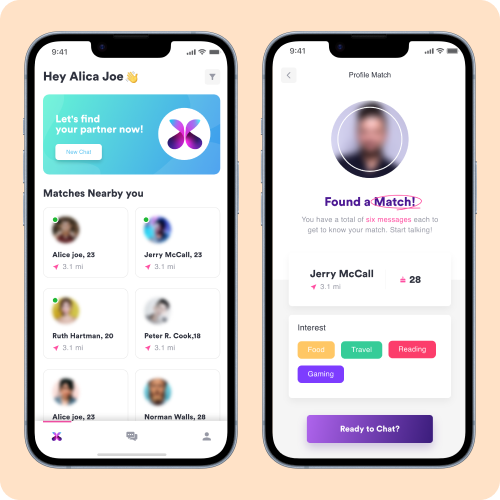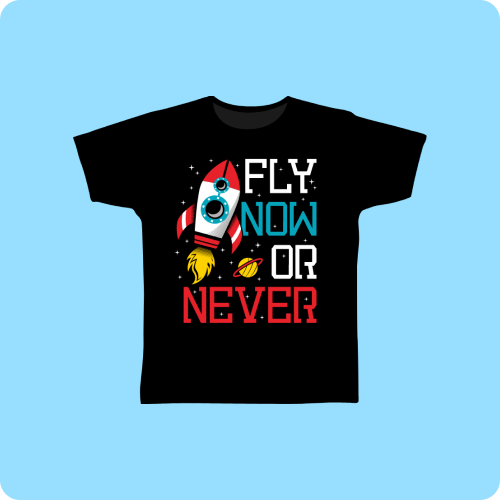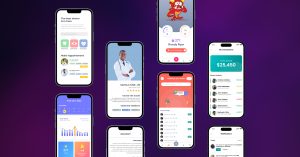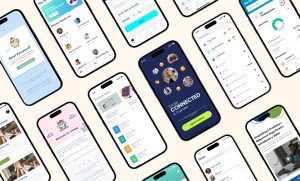From chatting on WhatsApp to scrolling through Instagram reels, the number of social media users is continuously on the rise. As user numbers grow, so does the need to anticipate what the next era of social media will bring. High competition, evolving user preferences, and the relentless advancement of technology are all key factors influencing the future of social media app development.
In this rapidly changing environment, staying updated with the latest trends is vital. Knowing what’s on the horizon can help you develop a social media app that not only captures users’ attention but also keeps them engaged over time. Embracing trends such as generative AI, cross-platform compatibility, and real time interactions ensures that your app remains at the forefront of innovation.
By staying ahead of these trends, you can build an app that meets and exceeds user expectations, leverages cutting-edge technologies, and maintains a competitive edge in the crowded social media landscape. Let’s dive into the latest trends shaping the future of social media app development and explore how you can incorporate them into your next app project.
Why Create a Social Media App?
Before delving into future trends in social media app development, it’s essential to understand the reasons for creating a social media app.
Here are some statistics that can help you analyze the market trends in social media app development.
According to a 2023 Statista report, 4.89 billion people worldwide were using social media apps. This number is projected to reach approximately six billion by 2027.
Facebook remains the market leader, being the first social network to achieve 3.049 billion monthly active users.
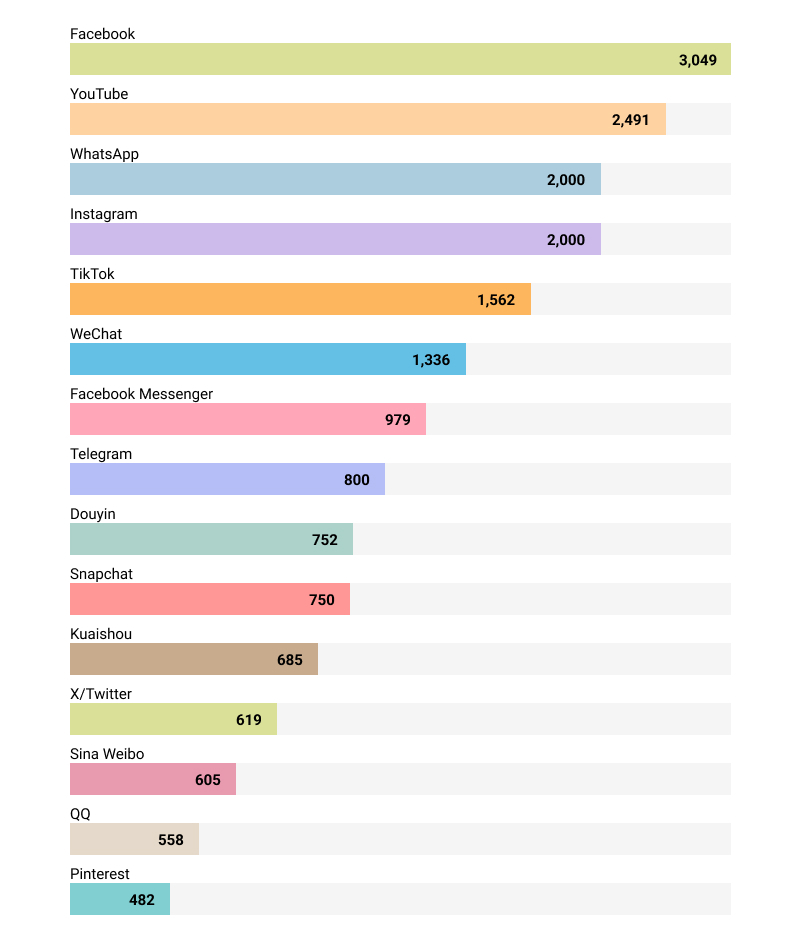
Forbes reports that in 2023, there were 398 million social media users in India aged 18 and above. The total revenue from social media apps is expected to grow at an annual rate of 7.30%, leading to a projected market volume of $189.50 billion by 2027.
The social media app development market reveals some fascinating insights. For instance, if the average user spends 145 minutes on social media each day, over a lifespan of 73 years, they will have spent approximately 5.7 years on social media platforms. This statistic underscores the effectiveness and success of the social media strategies crafted by marketers.
Latest Trends in Social Media App Development
Social media app development has evolved significantly in recent years. With technological advancements and changing user behaviors, developers and businesses must stay ahead of the curve to deliver engaging and innovative experiences.
Let’s explore some of the most recent trends shaping the future of social media app development.
Cross-Platform Compatibility
In today’s digital age, users expect seamless experiences across different devices. Cross-platform compatibility is no longer a luxury but a necessity. Whether you’re developing a social media app for iOS or engaging in Android social app development, ensuring that your app functions smoothly across all platforms is essential. This trend not only enhances user experience but also widens your app’s reach, allowing you to tap into a larger audience.
To achieve this, social media app development companies are increasingly adopting frameworks like React Native and Flutter, which allow for the creation of apps that work efficiently on multiple platforms with a single codebase. This approach not only reduces development time and costs but also simplifies maintenance and updates. Additionally, cross-platform apps ensure consistent performance and design, providing users with a uniform experience regardless of their device.
As users continue to demand flexibility in how they access social media, the importance of cross-platform compatibility will only grow. By prioritizing this trend in your social media app development strategy, you can ensure that your app remains competitive and appealing to a diverse user base.
Use of Generative AI
Generative AI is transforming social media app development by enabling apps to offer personalized content and experiences. This technology analyzes user behavior and preferences to generate customized feeds, recommend content, and even create automated responses. Social media app development companies are leveraging generative AI to enhance user engagement and retention, making apps smarter and more intuitive.
One of the most significant applications of generative AI in social media is content creation. AI algorithms can generate relevant and engaging content tailored to individual users, ensuring that they see posts that align with their interests and activities. This personalization enhances user satisfaction and keeps them coming back to the app.
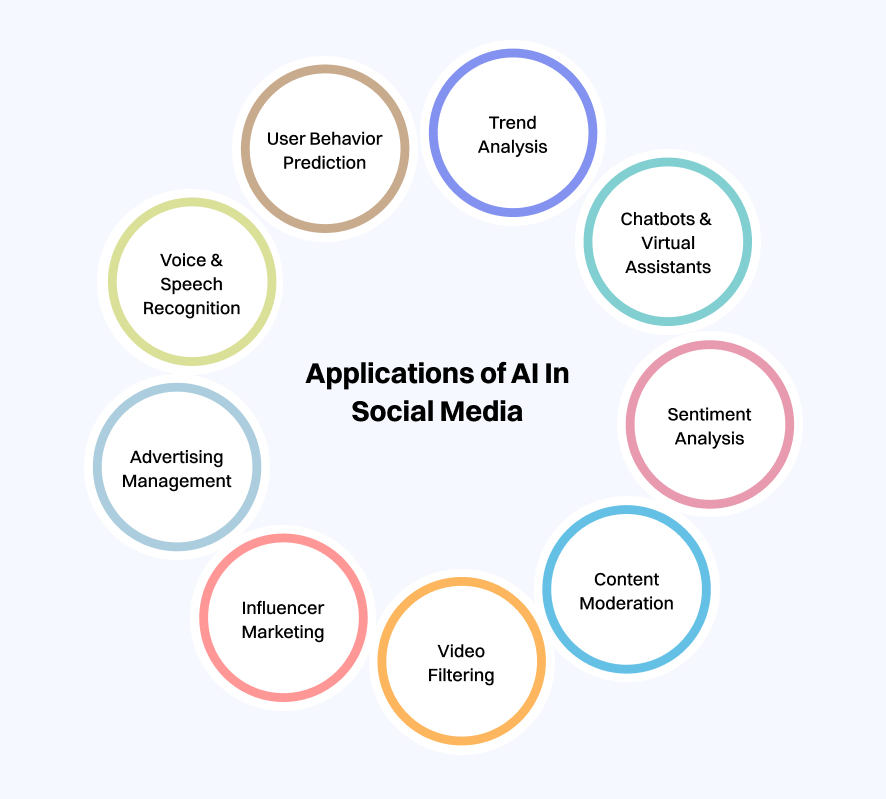
Moreover, generative AI can automate customer service through intelligent chatbots that understand and respond to user queries in real time. These chatbots can handle a wide range of interactions, from answering common questions to assisting with account management, providing users with instant support, and freeing up human resources for more complex tasks.
As AI technology continues to advance, its role in social media app development will likely expand, offering even more sophisticated tools for personalization and user engagement. Embracing generative AI can give your app a competitive edge, making it more attractive and user-friendly.
Live Streaming and Real Time Interactions
Live streaming has become a cornerstone of modern social media platforms. Real time interactions through live videos allow users to engage with their audience instantaneously. This trend is particularly popular among influencers and brands looking to build authentic connections with their followers. Incorporating live streaming capabilities in your social media app can significantly boost user engagement and interaction.
The appeal of live streaming lies in its immediacy and authenticity. Users can broadcast events, share moments, and interact with viewers in real time, creating a sense of community and engagement that pre-recorded content cannot match. For brands, live streaming offers a unique opportunity to showcase products, conduct live Q&A sessions, and provide behind-the-scenes glimpses, fostering a deeper connection with their audience.
To effectively integrate live streaming into your app, it’s crucial to ensure a smooth and high-quality streaming experience. This involves investing in robust infrastructure, optimizing video encoding, and providing tools for users to interact with streamers through comments, likes, and other engagement features.
Voice and Chatbot Integration
Voice and chatbot integration is another trend revolutionizing social media app development. Users appreciate the convenience of voice commands and the efficiency of chatbots for instant responses. Integrating these features into your app can enhance user experience by providing quick, hands-free navigation and 24/7 customer support. This trend is especially beneficial for social media app development companies aiming to create user-friendly and accessible apps.
Voice recognition technology has advanced significantly, enabling more accurate and natural interactions. By incorporating voice commands, social media apps can offer users a hands-free way to navigate, search for content, and perform other actions, making the app more accessible and convenient, especially for users on the go.
Chatbots, powered by AI, can handle a wide range of user interactions, from answering frequently asked questions to managing account settings. These bots can provide instant support, improving user satisfaction and reducing the workload on human support teams. Additionally, chatbots can gather valuable data on user preferences and behavior, helping developers fine-tune the app to better meet user needs.
IoT Application
The Internet of Things (IoT) is extending its reach into social media apps, creating new opportunities for interaction. Imagine a scenario where your smart devices can communicate with your social media apps, offering personalized content based on your activities. This trend is pushing the boundaries of social media app development, enabling apps to become more integrated into users’ daily lives.
IoT integration allows social media apps to gather data from various connected devices, such as fitness trackers, smart home devices, and wearables. This data can be used to provide users with tailored content and recommendations. For example, a social media app connected to a user’s fitness tracker might suggest health-related content or connect the user with fitness communities.
Moreover, IoT can enhance user engagement through automation and smart interactions. For instance, a smart home device could notify users of live events or new content on their social media feed, encouraging more frequent interaction. This level of integration creates a seamless experience that bridges the gap between the digital and physical worlds.
Must Read: Social App Development: The Ultimate Guide From Idea to Launch
Video Content and Live Streaming
Video content remains a dominant force in social media. The popularity of platforms like TikTok and Instagram Reels highlights the importance of incorporating short-form video content into your app. Additionally, live streaming continues to grow, providing real time interaction and engagement. Focusing on video content and live streaming in your social media app development strategy can help capture and retain users’ attention.
Short-form videos are particularly effective in capturing users’ attention quickly and keeping them engaged. These videos are easy to consume and share, making them ideal for social media platforms. By integrating features that allow users to create, edit, and share short videos, you can tap into this trend and enhance user engagement.
Live streaming, on the other hand, offers a more interactive experience. It allows users to broadcast live events, engage with their audience in real time, and create a sense of community. Live streaming is especially popular among influencers and content creators, who use it to connect with their followers and build a loyal audience.
Influencer and Social Commerce Integration
Influencer marketing and social commerce are reshaping how businesses interact with consumers. Integrating features that facilitate collaborations with influencers and support social commerce can significantly enhance the appeal of your social media app. This trend is driving the development of apps that not only connect users but also enable seamless shopping experiences.
Influencers have become a powerful force in social media, driving trends and influencing purchasing decisions. By creating features that allow influencers to easily collaborate with brands and share sponsored content, you can attract both influencers and their followers to your app. This can increase user engagement and drive growth.
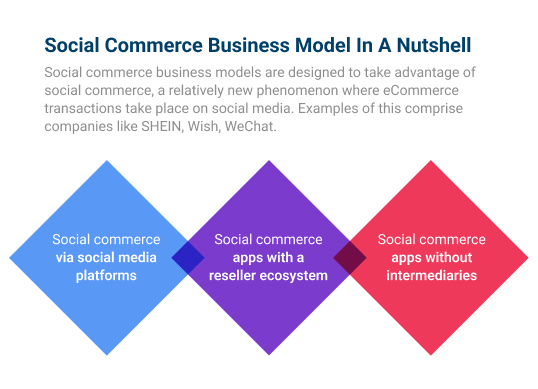
Social commerce, which combines social media and e-commerce, is another key trend. By integrating shopping features directly into your app, you can create a seamless shopping experience for users. This can include features such as shoppable posts, in-app purchases, and personalized recommendations based on user behavior. Social commerce not only enhances user experience but also provides new revenue streams for your app.
The Rise of Augmented Reality
Augmented Reality (AR) is making significant strides in social media app development, offering new and exciting ways for users to interact with content. AR technology overlays digital information in the real world, creating immersive and interactive experiences. This trend is particularly popular in apps that focus on creativity and self-expression, such as Snapchat and Instagram.
AR can enhance user engagement by providing unique and personalized experiences. For example, AR filters and effects allow users to transform their appearance, add interactive elements to their photos and videos, and create engaging content that stands out. This not only boosts user interaction but also encourages users to spend more time on the app.
Additionally, AR can be used for practical applications, such as virtual try-ons for fashion and beauty products, interactive tutorials, and location-based experiences. By incorporating AR features into your social media app, you can provide users with innovative and engaging experiences that go beyond traditional social media interactions.
Green Practices
As environmental awareness grows, green practices are becoming a significant trend in social media app development. Users are increasingly concerned about the environmental impact of their digital activities, and developers are responding by incorporating eco-friendly features into their apps. This includes optimizing app performance to reduce energy consumption, using renewable energy sources for server hosting, and promoting digital sustainability initiatives. For example, apps can be designed to function efficiently even in low-bandwidth environments, reducing the overall energy required for data transmission.
Social media app development companies are also exploring ways to minimize their carbon footprint. This can involve using green data centers powered by renewable energy, optimizing code to make apps more energy-efficient, and encouraging users to adopt sustainable practices. By making these changes, developers can significantly reduce the environmental impact of their apps.
Additionally, social media platforms can play a crucial role in raising environmental awareness. By featuring content related to environmental issues, promoting eco-friendly products, and supporting sustainable brands, apps can educate users and inspire them to make more environmentally conscious decisions. Integrating features such as carbon footprint trackers, green challenges, and sustainability badges can also engage users and encourage them to participate in environmental initiatives.
Incorporating green practices into social media app development not only addresses the growing demand for environmentally responsible digital solutions but also enhances the brand’s reputation. Users are more likely to support and engage with apps that align with their values, making green practices a smart business move as well as a moral imperative.
Sustainable and Ethical Practices
In addition to green practices, sustainable and ethical practices are gaining importance in social media app development. This involves ensuring that the development and operation of the app adhere to ethical standards and contribute to social good. One critical aspect is data privacy and security. Users are increasingly concerned about how their personal information is used and protected. Social media app development companies must prioritize robust security measures to safeguard user data and comply with regulations like GDPR and CCPA.
Fair labor practices are another crucial element. This means ensuring that everyone involved in the app development process, from coders to support staff, works in fair and just conditions. This includes offering competitive wages, reasonable working hours, and a safe working environment. Supporting diversity and inclusion initiatives is also vital. Social media platforms can foster a positive and inclusive online community by promoting content from diverse voices and implementing policies that prevent discrimination and harassment.
Furthermore, social media apps can promote ethical behavior by providing tools for reporting and moderating harmful content. This includes algorithms and human moderators working together to identify and remove hate speech, misinformation, and cyberbullying. Supporting mental health and well-being is also a key aspect of ethical practices. Features such as time management tools, mental health resources, and supportive communities can help users maintain a healthy balance in their digital lives.
By prioritizing sustainable and ethical practices, social media app developers can build trust with their users and create a platform that is not only engaging but also socially responsible.
Also Read: How To Make A Social Media App? Simple Guide to Social Media App Development
Why Choose Resourcifi for App Development?
Let’s be real: staying ahead in social media app development isn’t a walk in the park. The landscape is constantly evolving, and to keep your app in demand, you need to know the latest trends. Think cross-platform compatibility, generative AI, live streaming, and voice integration—all these can make your app stand out and stay relevant.
Knowing the current trends in social media app development before building a social media app is crucial to making an app that can stand out with the future trends and can never get out of demand.
You can also develop your own social media app, including all the future trends enriched with the latest technologies. By staying informed and proactive, you can ensure your app remains a step ahead, capturing user interest and fostering long-term loyalty.
Resourcifi is here to help you develop a cutting-edge social media app, packed with the latest trends and technologies. Our experts are ready to bring your vision to life.
Contact us to find out more. Let’s create an app that not only meets current demands but also anticipates future needs. You’ve got this!
Conclusion
With technology evolving at breakneck speed and user expectations shifting just as quickly, staying on top of the latest trends is essential. But don’t worry—we’ve got you covered. From cross-platform compatibility and generative AI to live streaming and voice integration, there are plenty of opportunities to make your app stand out and keep users coming back for more.
But let’s not stop there. Today’s users are savvy and socially conscious, looking for apps that not only entertain but also align with their values. This is where green practices and sustainable and ethical considerations come into play. By optimizing your app to reduce energy consumption, using renewable energy sources for server hosting, and promoting digital sustainability initiatives, you can make a real difference. And trust us, users notice and appreciate these efforts.
On top of that, prioritizing data privacy, fair labor practices, and promoting a positive online community isn’t just the right thing to do—it’s good business. Users are more likely to trust and engage with platforms that protect their data, support diversity, and foster a safe and inclusive environment. By integrating these sustainable and ethical practices into your social media app development strategy, you’re not only meeting user expectations but exceeding them.
So, what’s the takeaway here? Keep your finger on the pulse of the latest trends, embrace innovative technologies, and don’t forget to weave in those all-important green and ethical practices. This approach will ensure your app doesn’t just survive but thrives in the competitive landscape of social media. And as we move forward, remember that blending technological advancement with social responsibility isn’t just a trend—it’s the future of social media app development.
In conclusion, developing a social media app that stands out in today’s crowded market is no easy feat. But by staying informed about the latest trends and committing to sustainable and ethical practices, you can create an app that truly resonates with users. So go ahead, take these insights, and build a platform that connects people, fosters positivity, and contributes to a better world. You’ve got this!










